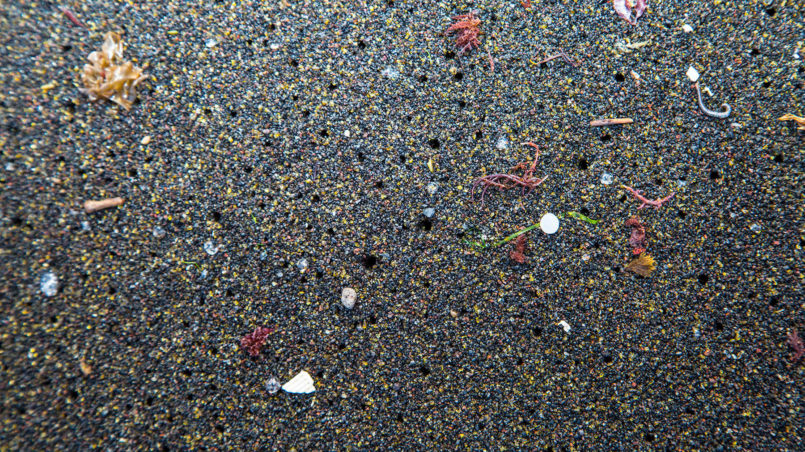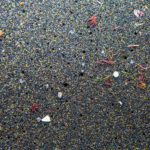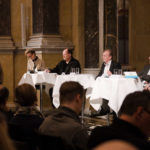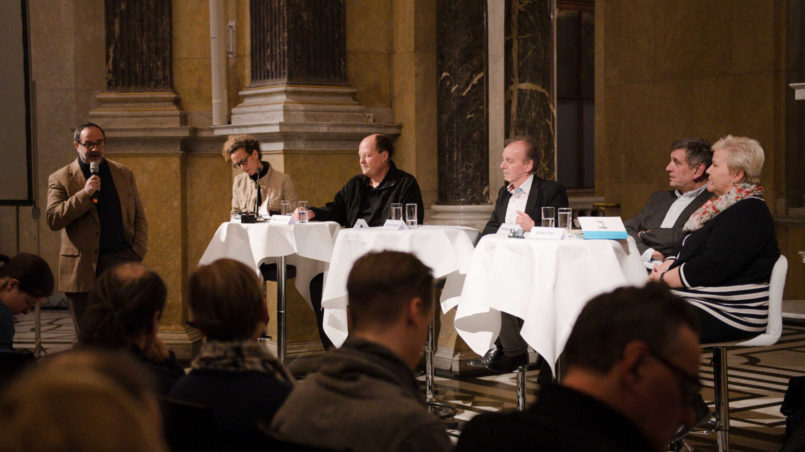Questions from the Audience: How Dangerous is Microplastic? – Part 2

Event data
- Datum
- 24. 1. 2017
- Host
- Forschungsverbund Umwelt der Universität Wien in Kooperation mit dem NHM Wien
- Location
- Naturhistorisches Museum Wien, Obere Kuppelhalle
- Event-type
- Podiumsdiskussion
- Participants
- Prof. Thilo Hofmann, Leiter des Forschungsverbundes Umwelt, Uni Wien, Geologe und Professor für Umweltgeologie, Uni Wien
- Gunnar Gerdts, Mikrobiologe und Wissenschaftler am Alfred-Wegener-Institut, Helmholtzzentrum für Polar- und Meeresforschung auf Helgoland
- Gerhard J. Herndl, Meeresbiologe, Dekan der Fakultät für Lebenswissenschaften an der Uni Wien, Leiter des Forschungsverbundes Umwelt, Uni Wien
- Dr. Wilhelm Vogel, Zoologe und Biochemiker, Abteilungsleiter für Oberflächengewässer im Umweltbundesamt
- Prof. Ulrike Felt, Professorin für Wissenschafts- und Technikforschung, Dekan an der Fakultät für Sozialwissenschaft an der Uni Wien
- Christian Köberl, Generaldirektor des Naturhistorischen Museums Wien
- Regina Hitzenberger, Vize-Rektorin Uni Wien
- Birgit Dalheimer, Ö1, Moderation
The experts in the dicussion round, “Environment in Conversation”, Gunnar Gerdts, Prof. Thilo Hofmann, Gerhard Herndl, Dr. Wilhelm Vogel and Prof. Ulrike Felt asked for audience questions. Since these were both asked and answered very extensively, they follow below, separately from the impulse round.
A law against microplastic in cosmetics is currently coming into force in Great Britain. How far away from a ban do you see Austria?
Prof. Ulrike Felt:
It is not just cosmetics, although we have come to zero in on those; from toothpaste to shower gel, almost all products contain microplastics. Of course that begs the question: Why is it even in there? What is to be achieved by this, what is to purpose of the addition? These questions also concern nanoparticles added to certain products. And then, of course, there is also the question of whether nanoparticles really need to be added to sun milk, just so it won’t look white on the skin? And what would it mean to leave these particles out?
And as I said, there are also large cosmetic companies which already voluntarily want to reduce the use of microplastic. The discussions there centre on how this might be replaced, and we are still far from achieving that goal.
Wilhelm Vogel:
We are in regular contact with Cosmetics Europe, which represents the interests of cosmetic companies, and we have the impression that it is still relatively easy to replace microplastics in cosmetics, at least in classical products (in peelings, for example, with ground apricot stones). However, it is more difficult to replace in other areas – such as in many cleaning agents. However, I find it disappointing that even in an area where microplastic could be easily replaced, so little is done. Although we know that there will be commitments at EU level, if this is not done on everyone’s own initiative, it will not be done everywhere.
Prof. Thilo Hofmann:
I think it is also a good question in that it focuses concretely on the responsibility that the consumer bears. Can we, as consumers, even have this responsibility at all? I would not know how to answer … Will I go on a mountain hike with the fur jacket again or do I find the technical fleece better? Can this even be up to us consumers in such a complex world at all? That, of course, is when the desire, the call for the legislator arises to regulate this matter for the individual.
If I do not wish to swing the legislative club, on account of not even knowing what impact and relevance the whole thing has at all – because the really large quantities come from somewhere else entirely – then, ultimately, all one does is waste energy.
In California it has been implemented that a better alternative always has to be checked for first. It then has to be argued before the authorities what those alternatives would be. This is the much more important step.
The beauty of plastic is its terribly long endurance, which is why we use it in the first place. The bad thing about plastic is its terribly long endurance, it won’t go away.
Gunnar Gerdts:
I fully agree that the secondary microplastic – which was previously a plastic bag – is much more than the primary microplastic. Of course, I am not very popular with the environmental associations that have brought this forward, but the good thing about the campaign is that the consumer is made to think about the issue. They are part of the whole affair, they do not only see it in the news, but also at home.
How else should one be able to imagine the microplastic threat? It is completely abstract. Like climate change.
But then people start to transfer. You get upset over microplastic in shower gel and the next time you go shopping, you notice that you have forgotten to bring a bag again – these are the moments when people begin to think.
What self-purification mechanisms are there in our oceans? There must be some, since after all the natural entry of oil into the oceans occurs as well.
Gerhard Herndl:
It is not all that easy to answer this question. What we know is that these substances are populated, among others by fungi, which are apparently able to partially break down plastic. But it is too early to estimate the extent to which this happens. There are indications that bacteria can help to break down the plastic, just as marine fungi.
Gunnar Gerdts:
Incidentally, our generation will not be experiencing this, nor will the next, because these are really slow processes at work. And I also suspect that it will not be completely degraded, but merely broken down into smaller and smaller parts.
Gerhard Herndl:
I would just like to add something to this discussion about microplastic when it comes to cosmetics …
Even large bottles eventually become microplastic. The particles become smaller and smaller, the plastic fragment further and become softer after having been submerged in the sea for a long time. And ultimately this also turns into microplastic.
We do indeed have a good recycling system. In third world countries, however, this is still underdeveloped. In India, for example, drinking water is only available in plastic bottles, but there is no recycling system, i.e. the material ends up in the environment and ultimately also in the sea. This should not be overlooked, because all the large plastic that we bring into the environment also become microplastic.
Here, the call goes out to corporations, for example, to offer plastic bottles only if there is a recycling system in place for them.
Prof. Thilo Hofmann:
Oceans have a self-cleaning mechanisms, of course, but you have to differentiate. The naturally introduced crude oil apparently tastes good to organisms and is rapidly degraded, while the microplastic is very tough. Its degradation is simply very slow, it takes generations. This is the big difference.
In Austria, there is a very good recycling system, and I say that anyone who properly disposes of their plastic waste here, has done everything right, and we don’t have any problems.
Prof. Thilo Hofmann:
If you simply throw your plastic bag into the environment, you have certainly done something wrong, and if you dispose of it correctly, you are certainly doing the right thing for starters. But even our disposal system is not perfect. And I believe in the intelligent consumer, who can also do without plastic in certain products.
For me, it wouldn’t do to say: ‘In poorly developed countries it is even worse, so I’ll just wait for them to catch up for now.’
Because if you also look at distributive justice, you have to admit that we have a rich system, so we can afford to become significantly better. Austria is an exporter of plastic, i.e. much more plastic is taken into other countries across the Danube than is brought here from Germany. So there is still room for improvement.
What I have gathered so far is that microplastic is so dangerous because it is persistent. But so are stones and sand. Why is microplastic evil while sand is not?
Gunnar Gerdts:
A difficult question; a chemist could perhaps answer this better because plastic has certain other properties, for example, the absorption of matter, such as heavy metals and pollutants. In fact, I believe that by becomig smaller and smaller, microplastic can at some point permeate membranes, and that is where I personally see the greatest danger.
Prof. Thilo Hofmann:
Plastic is not just a PET bottle after all. Plastics contain very many additives, they can contain softening agents and (heavy) metals. Thus, there are already a whole array of substances which are known to be highly toxic. When we look at the phthalates, a rather nasty softening agent, we know that most of it is introduced into the environment by plastics.
That is to say, it is not plastic per se, it is the additives, the softeners, flame retardants, which at times come out of this plastic. That’s what makes the difference to the sand.
Prof. Ulrike Felt:
The question that arises here is, above all: how much do we need to know until we come to the conclusion that the subject should be considered? This is the big issue. For, on the one hand, it means that, as long as we do not know enough, we do not have to do anything. On the other hand, there is an uncomfortable feeling because we know we are bringing something into the environment which would not be there otherwise.
To this end, one has to look at the “career” of the plastic: how many areas has it penetrated, and what additives were needed to make it successful in the field?
This raises the question of whether we need to start with this discussion at an earlier stage. We began the climate discussion extremely late, on the basis that there was no proof or clarity – until we suddenly realized: Oh dear, this is serious now! And the experts said: It’s a bit late now.
In this respect, as a society, we must figure out how to deal with the “too early” or “too late” and whether we can’t benefit from previous experienes with environmental problem areas and learn that we cannot simply wait and look to where we have room to act.
I belong to the generation that taught their parents the separation of waste. In the discussion about microplastic, I see above all the question of how much we can achieve through knowledge and education. Education, above all, that we are part of an ecosystem, from which we cannot simply remove ourselves. We cannot say that we have nothing to do with it, because sooner or later it will have something to do with us, either way. How do you see the task of education to make it clear to children that the plastic bottle they use is still associated with them when they are no longer using them?
Dr. Wilhelm Vogel:
I see a limit to the effectiveness of knowledge; wherever it does not hurt, it will work – and I’d say the separation of waste hurts only a little, but not very much. But there are also areas where it would hurt a lot more. Take, for example, travelling – who would be willing to forgo travelling, or only to go on holiday to nearby places?
Prof. Thilo Hofmann:
In terms of education and environmental awareness, it’s fair to say that the higher the education, the higher the average income, and the higher the income, the worse the environmental footprint.
Nevertheless, I consider education to be enormously important. However, I do not support the current trend towards statements such as: “Man is bad as such, everything he does is an interference with the environment”, which only leads to resignation.
Prof. Ulrike Felt:
In the field of education, the question of the nature of this education arises. We have here a waste system, a ritual that takes place according to the principle of order. However, I believe that in a world where plastic exists in so many different forms, only a fraction of it is caught. For this, awareness is very important, the conscious decision for a particular product.
Quasi a benefit-loss calculation on a smaller scale. What are the advantages of a particular product, and what is the disadvantage of the product for the environment? How can I weigh this up? The issue therefore concerns the acquisition of the capacity to weigh up. Because we cannot adequately react to the changeability of such materials by rituals alone.
Plastics is now available in so many different forms that we are often unaware of how all the equipment we use is disposed of. Or when everyday items, e.g. ballpoint pens, that we are not even aware that they are made from plastic, land in the waste.
Gerhard Herndl:
The consumption of plastic has not changed significantly in the last ten years. In general, we must be aware that plastic is, in principle, crude oil, and crude oil is finite. For this reason alone, we must recycle a lot more than we currently do. The mentality however, is rather that we take something out of the environment, use it and then throw it away. This is not only the case with plastic but also with other raw materials and minerals that are finite.
If persistence is such a big problem, could degradabiltiy not be enforced as a “design criterion” so that plastic becomes easier to break down?
Gunnar Gerdts:
That’s a good idea. Intelligent design is basically positive, but the idea of biodegradable plastics is already well known. The break-in points are built into the polymers, and the effect is that the eye-catcher – such as the bottle – is no longer there, because it becomes microplastic. But basically I believe that the idea of tackling the problem sooner than at the very end of the chain is correct. The solution to the problem becomes more and more expensive, the later one begins to tackle it after all.
But here, too, the consumer is called into action, because what we want is, in principle, the squaring of the circle: we want a bottle that is durable and has all other positive qualities and then disappears at the push of a button when we no longer need it .
Prof. Thilo Hofmann:
I am not so sure that this can work, because after all, many of the substances are also deliberately manufactured so that they last for a long time. Things such as dashboards or shock absorbers cannot already have broken down after two years.
Gunnar Gerdts:
The bulk of plastics we are talking about, and the thing which is causing us the most trouble, is the packaging material. And that’s something where intervention at the very beginning is needed; this is due to not only ecological, but also economic reasons. Much has to be chnaged but a prerequisite is that we change both consumption and sale. This is a very deep interference when you get started there, but would effect much change.
Overall the experts present were very satisfied with the lively participation and were very happy about the interesting questions. In October the next event in the “Environment in Conversation” serieswill take place in the Natural History Museum.
Translation from German: Serena Nebo
Credits
| Image | Title | Author | License |
|---|---|---|---|
 |
Microplastics Azores | Raceforwater | CC BY-SA 4.0 |
 |
Umwelt im Gespräch @ NHM-2 | Bianca Traxler | CC BY-SA 4.0 |

